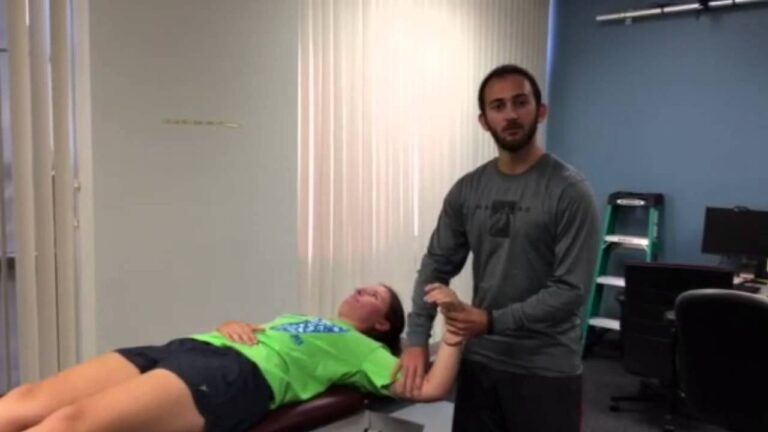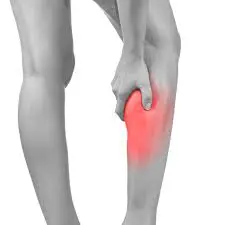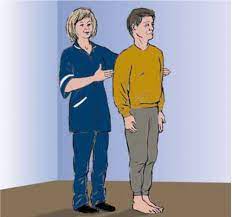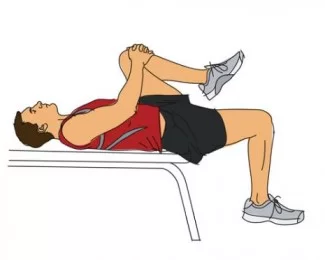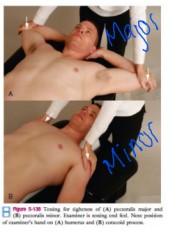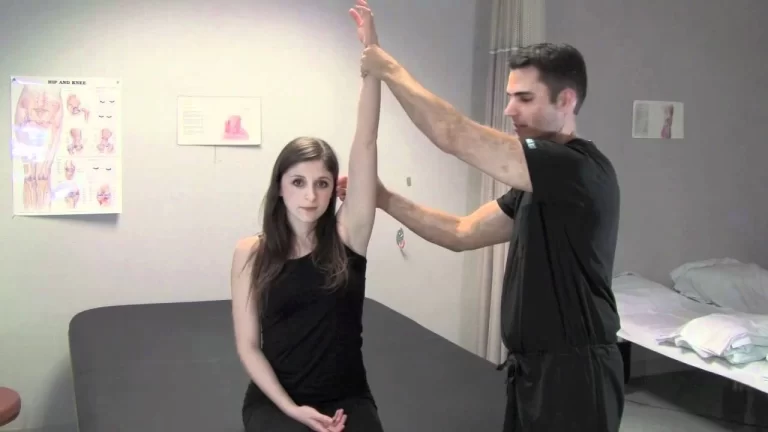Star Excursion Balance Test (SEBT)
What is a Star Excursion Balance Test (SEBT)?
The Star Excursion Balance Test (SEBT) is a dynamic balance test that measures the ability of an individual to reach out and touch a target with one foot while balancing on the other foot. The test is performed on a grid with eight lines radiating from a central point, each line representing a different direction.
The participant stands on one foot in the center of the grid and reaches out as far as possible along each line, with their hands on their hips. The distance that the participant can reach is measured and recorded.
The SEBT is a reliable and valid measure of dynamic balance, and it has been shown to be a good predictor of lower extremity injury risk. The test is also sensitive to changes in balance following injury or rehabilitation.
Purpose:
- To assess dynamic balance, which is the ability to maintain stability while moving.
- Identifying athletes at risk for injury
- Monitoring progress during rehabilitation
- Screening for balance deficits and core control
Equipment required:
Measuring tape, marking tape, and a flat, non-slippery surface.
Four 120 cm pieces of marking tape have been set out on the ground before the test, intersecting in the middle, with the lines drawn at 45° angles.
Preparations:
To the subject, explain the test methods. Carry out the necessary warm-up.
Technique of Star Excursion Balance Test
The SEBT’s objective is to keep one leg in a single-leg stance while reaching the opposing leg as far as feasible.
The participant stands barefoot on one foot in the center of the grid.
The participant reaches out as far as possible along each line, with their hands on their hips.
The test subject is required to balance on one leg while spreading the other leg as far as they can in eight different directions.
The participant must reach in 8 distinct positions, once in each of the following directions: anterior, anteromedial, medial, posteromedial, posterior, posterolateral, lateral, and anterolateral (for example, when standing on his or her left leg).
The distance that the participant can reach is measured and recorded.
The participant repeats the test on the other foot.
The average reach distance for each direction is calculated for both feet.
Athletes who are more likely to sustain lower extremity injuries and people with chronic ankle instability may be better identified using the anterior, posteromedial, and posterolateral positions.
When the subject exhibits a significantly shorter reach while standing on the injured limb compared to while standing on the healthy leg, SEBT has demonstrated the subject’s lack of dynamic postural control.
A factor analysis revealed that one reach direction in particular (posteromedial) was able to effectively identify people with chronic ankle instability as well as performing all eight directions. The test originally included reaching in eight directions while standing on each foot.
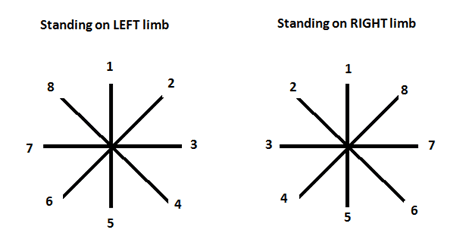
8 Directions are:
- Anterior
- Anteromedial
- Medial
- Posteromedial
- Posterior
- Posterolateral
- Lateral
- Anterolateral
Star Excursion Balance Test (SEBT) Video
The ‘Y-test’ is a test that is comparable to the SEBT but uses only three directions.
Scoring System of Star Excursion Balance Test
All distances reached during the test are recorded to the closest 0.5 cm. Calculate the average of the three measurements for each direction, as well as the relative distance in each direction (normalized) (%) (average distance in each direction/leg length * 100).
Average distance in each direction (cm):
Reach 1 + Reach 2 + Reach 3 / 3
Relative (normalized) distance in each direction (%):
Average distance in each direction/leg length*100
These calculations should be made for the right and left legs in both directions, giving each athlete a total of 16 scores.
Star Excursion Balance Test normal values
Age, sex, and sport all affect the Star Excursion Balance Test (SEBT) normal values. The relative reach distance in each direction should, however, generally be larger than 85% of the leg length.
Here are a few examples of typical SEBT values for various populations:
Healthy Young Adults:
- Anterior reach: 94-100% leg length
- Posteromedial reach: 91-100% leg length
- Posterolateral reach: 70-94% leg length
Athletes:
- Anterior reach: 100-105% leg length
- Posteromedial reach: 95-105% leg length
- Posterolateral reach: 75-100% leg length
Older adults:
- Anterior reach: 85-95% leg length
- Posteromedial reach: 80-90% leg length
- Posterolateral reach: 65-85% leg length
It is important to note that these are only general guidelines. Speak with your doctor or physical therapist to find out what is typical for you. They can administer the SEBT and compare your results to those of individuals with similar ages and levels of activity.
It’s not always a sign of a problem if your SEBT score is below average. However, it can indicate that your risk of injury has increased. You can create a strategy to increase your balance and lower your risk of injury with the assistance of your physician or physical therapist.
Advantages:
This test can be carried out easily and cheaply with basic tools.
Disadvantages:
If the test needs to be run on a large number of people, it can take some time.
Evidence
- Hertel, Miller, and Deneger (2000) claim that r = 0.85-0.96 represents the reliability of the SEBT.
- Plisky et al. (2006) report that this test’s reliability varies between 0.82 to 0.87, scoring 0.99 for the measurement of limb length.
- Another study found: According to Hardy et al. (2008), intra-class correlation coefficients for the SEBT’s reliability ranged from 0.67 to 0.87.
- According to Chaiwanichsiri et al. (2005), the Star Excursion Balance training was superior to a traditional rehabilitation program in terms of enhancing the functional stability of an ankle that had been injured.
- According to Plisky et al. (2009), the SEBT’s intra-rater reliability is moderate to good (ICC 0.67–0.97) and its inter-rater reliability is poor to good (0.35-0.93).
When comparing reach deficits between and within participants with unilateral chronic ankle instability, the SEBT seems to be an effective method.
Additionally, it can be applied to identify weaknesses and asymmetries in people and support the decision-making process for a return to play.
Why is Balance important in sports?
Balance also referred to as “postural control,” can be described statically as the capacity to hold oneself steady while making only minimal movements, and dynamically as the capacity to carry out an action while holding a steady stance. The capacity to hold a stable position in a fast-paced sporting situation is essential for both effective application of the talent and lowering the risk of harm.
Testing and tracking an athlete’s dynamic stability may be very important since dynamic balance is an essential component of performance and because having poor balance is associated with a higher risk of injury.
Summary
Dynamic balance can be measured with accuracy and validity using the Star Excursion Balance Test (SEBT). It has been shown to be a good predictor of lower extremity injury risk, and it is sensitive to changes in balance following injury or rehabilitation.
Athletes, people who have had injuries to their lower extremities, and older people can all be assessed for dynamic balance with the SEBT. The test can be used to check for balance issues, identify athletes who are vulnerable to injuries, and track improvement throughout recovery.
References
Star Excursion Balance Test. (n.d.). Physiopedia. https://www.physio-pedia.com/Star_Excursion_Balance_Test
Star Excursion Balance Test -. (2017, December 3). https://exercise.trekeducation.org/assessment/balance-testing/star-excursion-balance-test/
Walker, O. (2023, August 31). Star Excursion Balance Test. Science for Sport. https://www.scienceforsport.com/star-excursion-balance-test/
Star Excursion Balance Test. (n.d.). https://www.topendsports.com/testing/tests/balance-star-excursion.htm


